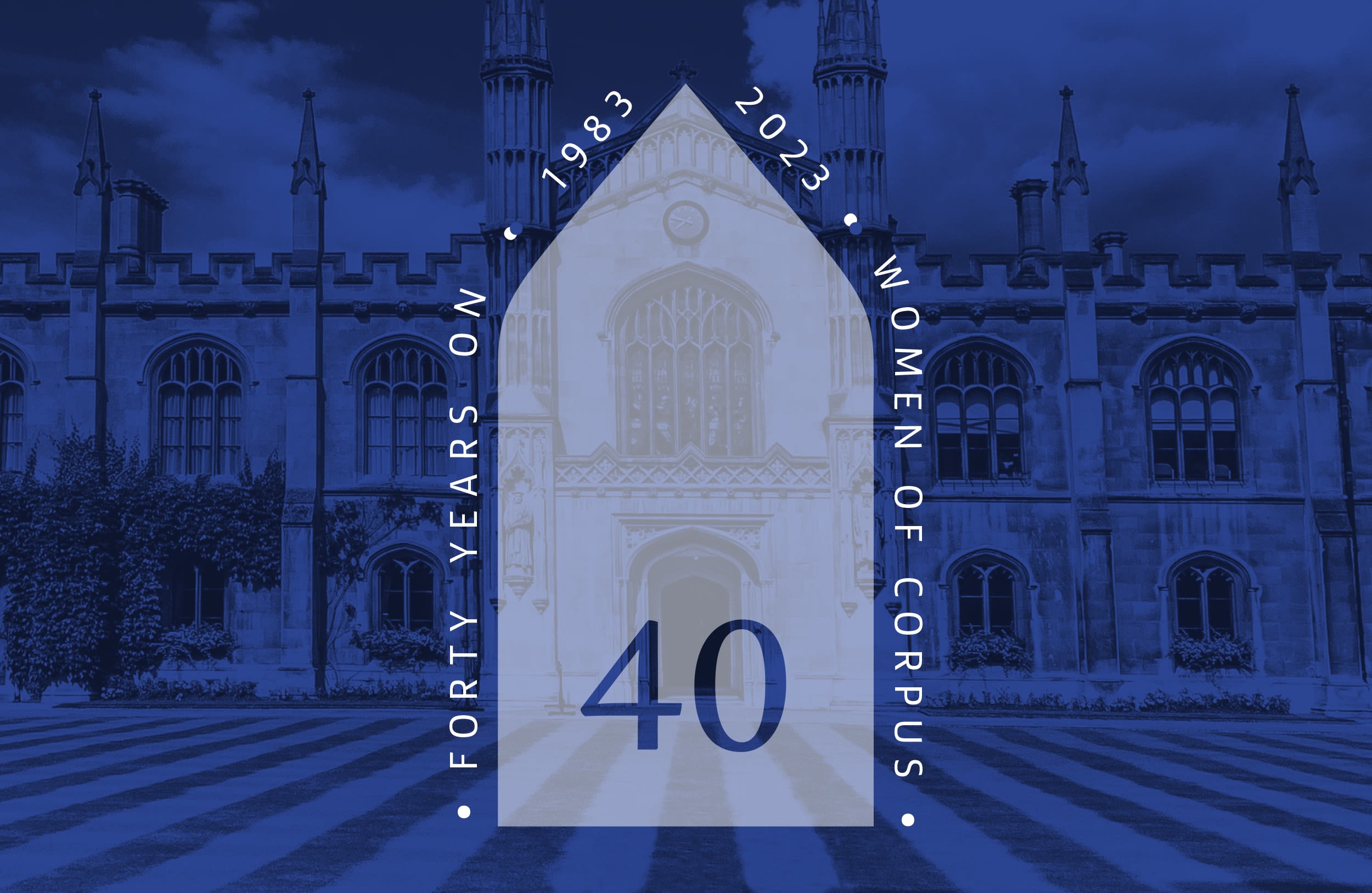THE BEDDERS
(since c1600s)
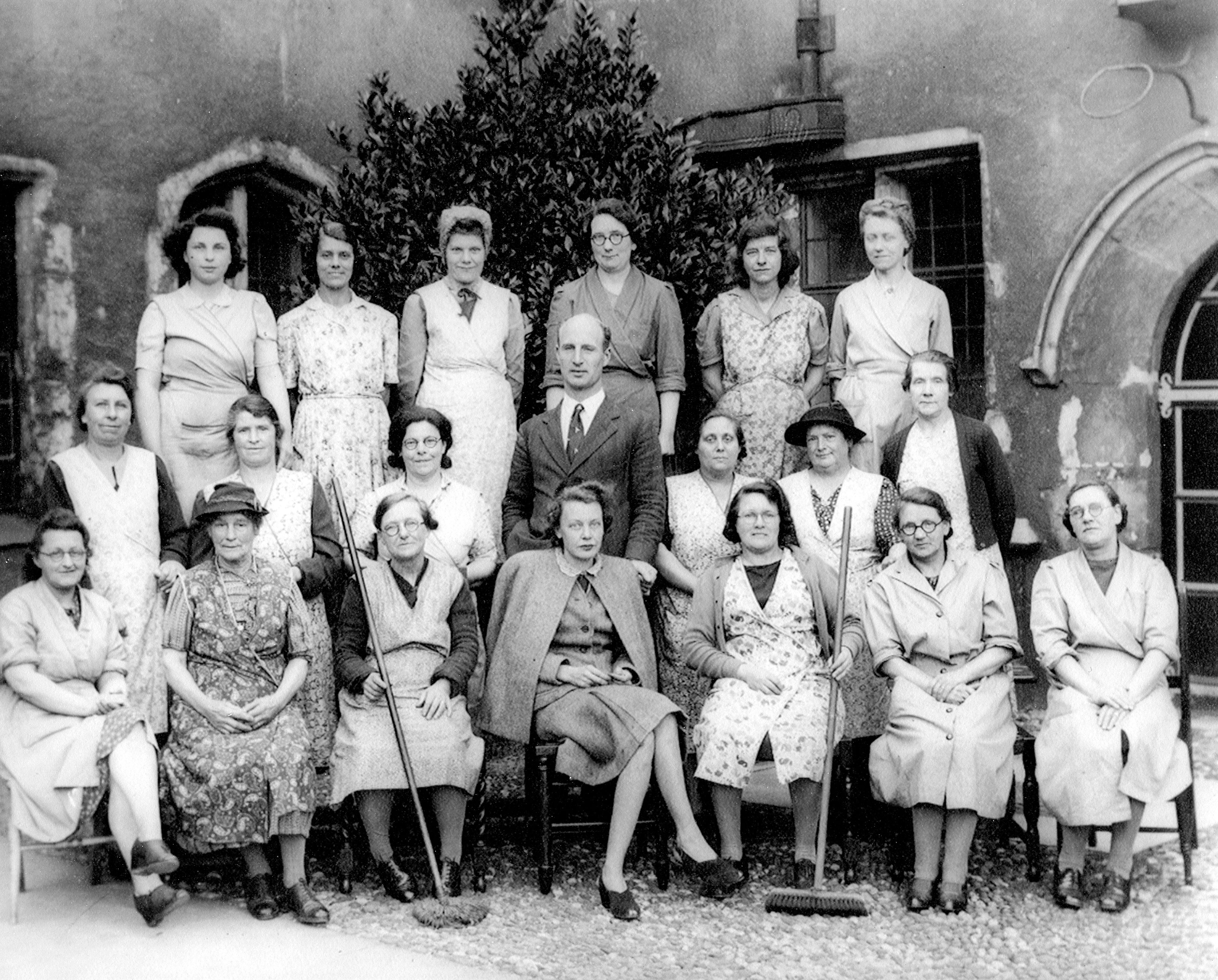
Considering the vital role that Bedmakers have played in the life of thousands of Cambridge students for at least 400 years, remarkably little has been written about them, and there is virtually no scholarship (a good subject for a PhD?). There are, however, tantalising glimpses into the working lives of these women, whose role has changed over the years but still remains an integral part of the College community.
One of the earliest mentions of 'Bedders' in the College archive is from the Chapter Book 1 (1569-1626) of 1645. "Bedmakers to be instructed that on Sundays they should make haste so that they can attend services at their churches." Twenty years later, on 12 August 1665: "In this time of plague only two women to be allowed in the college, to make beds and wash, and these are not to leave the college. The women, if they accept, to be Moore and Todd." These excerpts would seem to show that Bedmakers were employed by the College since at least the mid-17th century, although most sources give the 18th century as the period when Bedmakers could commonly be found working at Cambridge Colleges.
The work was not easy. Along with gyps (menservants), Bedders had to haul coal and water up narrow staircases, light fires, tidy rooms, awaken students and bring them breakfast. Account books at Trinity Hall indicate that women were also employed to carry out other duties around College, including cleaning the Dining Hall and polishing silver. At Corpus and elsewhere they also waited on the undergraduates in Hall. In Memories & Customs: 1820-1860, J.W. Clark says, "The waiters...were bedmakers, who performed their duties in their bonnets and little shawls pinned around their shoulders – I suppose to keep out the draughts which were numerous and strong."
In the book, Faith Under Fire, Anglican Army Chaplains and the Great War, Edward Madigan writes about the clear class divide between students and the workers who staffed the colleges. "Most undergraduates had a clearly middle-class worldview and, with the exception of the servants who attended to them, they were almost wholly unfamiliar with the working classes. Those members of the working classes with whom undergraduates were acquainted - personal servants, bedmakers, porters, townspeople - tended, moreover, to be depicted in a consistently negative manner in college magazines."
Sometimes Bedders, and college servants in general, were depicted as greedy, endlessly asking for additional 'perquisites' for their services. William Everett, an American who was an undergraduate at Trinity College in 1859 gave a course of lectures on his time at Cambridge, published in 1881 as Cambridge Trifles, or, Splutterings from an Undergraduate Pen. He decries requests for beer from servants, including Bedmakers, as "This little means of washing down the disgusts of your labor." Later he states, "At every stage of your course, bed, board, chapel, amusement, you are beset by a crowd of servitors, who, under the name of waiting on you, while they are officiously pressing on you a hundred comforts you don't want, bar you of the greatest comfort, your liberty, and fleece you in a thousand ways."
This attitude, although no doubt not universal, began to change in the twentieth century. Bedders themselves began to ask for improved conditions, even joining a union set up by the National Federation of Women Workers to demand better pay, shorter hours and improved working conditions. And by mid-century, more personal recollections appear where Bedders are clearly performing a pastoral role with 'their' students, looking after them with fond, even maternal feelings.
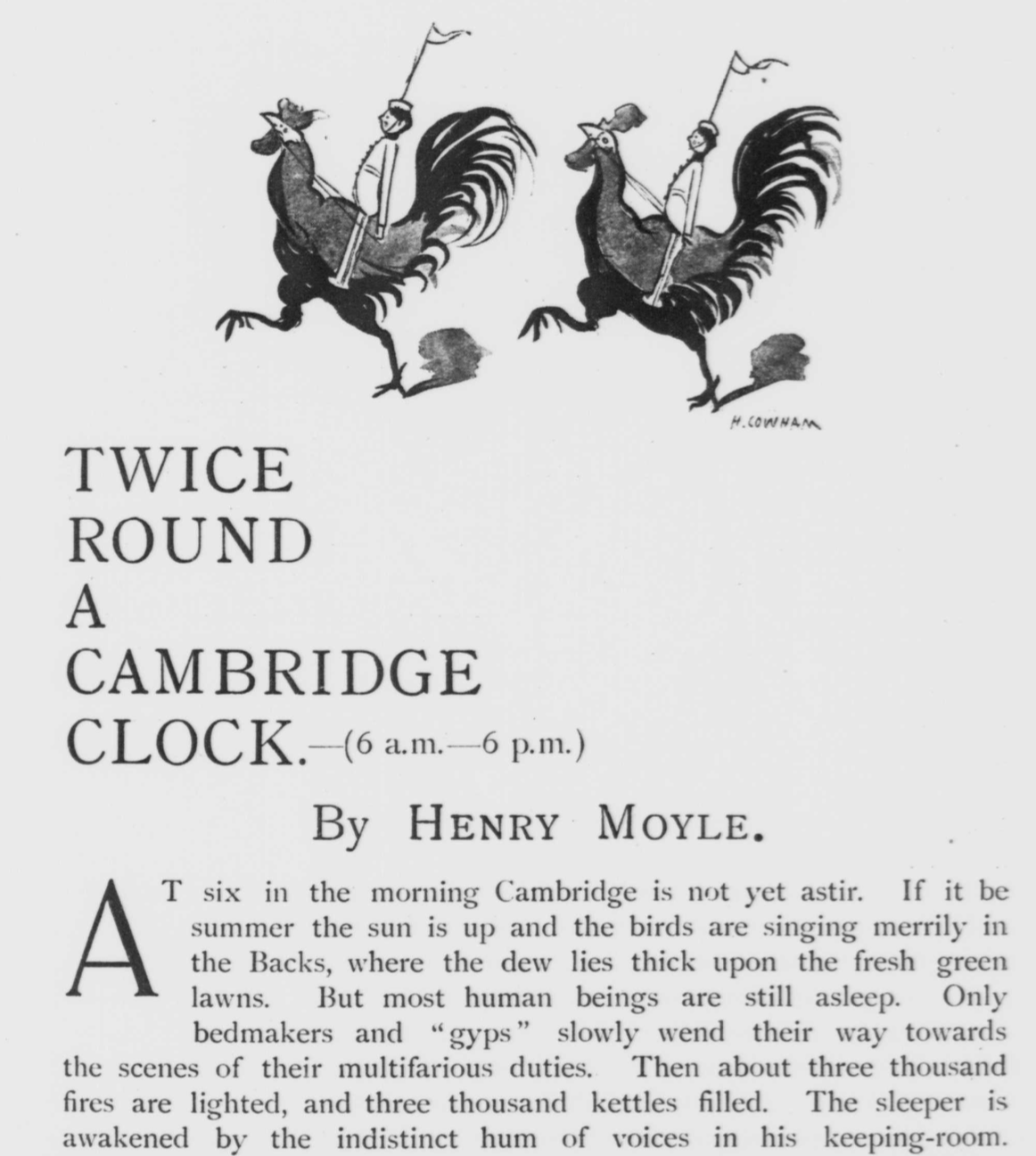
From Twice Round a Cambridge Clock, Henry Moyle. The Idler, Feb 1899-July 1901.
From Twice Round a Cambridge Clock, Henry Moyle. The Idler, Feb 1899-July 1901.

Mrs Mercy Reynolds, Bedmaker at Emmanuel College Cambridge, c 1945.
Mrs Mercy Reynolds, Bedmaker at Emmanuel College Cambridge, c 1945.

The Staircase Girls, by Catherine Seymour, featuring a photo of Corpus on the cover. This 2016 novel was based on interviews Seymour conducted with Bedders in the post-war period, including some of her own relatives.
The Staircase Girls, by Catherine Seymour, featuring a photo of Corpus on the cover. This 2016 novel was based on interviews Seymour conducted with Bedders in the post-war period, including some of her own relatives.
Senex et horibilia
A common perception is that Bedmakers were older women, and deliberately chosen for their lack of comeliness (as alumnus Richard Gaunt says, "Senex et horibilia was said to be part of the job description.") In the 1969 book, Cambridgeshire Customs and Folklore, Enid Porter writes, "Until early in this century, it was customary to appoint more elderly and, by contemporary accounts, far from good-looking women, presumably in the interests of the undergraduates' morals." She says that until shortly before the Second World War, typically only married women were employed as Bedders.
In the Cambridge Meteor of 14 June 1882 a satirical article 'On Bedmakers' states, "Our bedmaker is of a middle stature with a slight tendency to stoop. She cannot be said to boast much architectural beauty, but...we cannot expect any of that sort of thing in bedmakers. From observation of our own bedmaker, we have come to the conclusion that it is the habit of the species to sleep in its clothes...because one never sees then at all different in appearance."
An alternative and equally unpleasant narrative suggests that Bedmakers - whose role clearly puts them into intimate contact with young men - were of loose morals or became objects of lust. In Tom Sharpe's Porterhouse Blue, a graduate student named Zipster harbours lascivious feelings for his Bedder, Mrs Biggs, who eventually returns his passion in an episode that leads to their mutual demise. (Incidentally, the Head Porter Scullion in Porterhouse Blue is said to have been modelled on Corpus's long-time Head Porter, Albert Jaggard, who was himself married to a Bedder.)
William Everett also speaks disparagingly of the work ethics of the Bedmakers. "Nominally, there is one assigned to every eight rooms, and she has one assistant under her. Practically, a person once appointed to this seriously lucrative and responsible place never gives it up, although utterly superannuated, toothless, and tottering. Accordingly her one assistant will grow into two, and the two will have three or four extra miscellaneous ones generally floating round, to do everything that their chiefs are too lazy to do themselves. On my own staircase, the bedmaker in chief, a hearty young woman of thirty-five or thirty-six, employed her old father, at least seventy-seven or eight years old, to do all her hardest work, in the way of drawing water, etc." He continues in a similar vein, complaining that the Bedmakers "constitute themselves inspectresses-general over all your belongings and arrangements, and know all you about much better than you do yourself. You are hopelessly in their power, and have your choice of submitting quietly to their ultra-despotic rule, or of carrying on a constant warfare."
Fortunately, this derisive and casually misogynist attitude has not endured, and in more recent decades Bedmakers have been looked upon with fondness by their charges, an affection which is often reciprocated. On General Admission day in June, Corpus Bedmakers line up outside the Porters' Lodge to cheer on the graduates on their way to the Senate House to receive their degrees.

A cartoon by alumnus John Forster published in Collegiate Sketches, or Alma mater illustrated in 1832 entitled 'A Freshman takes Possession' shows a room in a disheveled state and a Bedmaker sweeping the floor clad in an apron and bonnet. In his History of the College, Patrick Bury says,"...the bedmakers, as John Forster's drawing suggests, were rarely either young or beautiful."
A cartoon by alumnus John Forster published in Collegiate Sketches, or Alma mater illustrated in 1832 entitled 'A Freshman takes Possession' shows a room in a disheveled state and a Bedmaker sweeping the floor clad in an apron and bonnet. In his History of the College, Patrick Bury says,"...the bedmakers, as John Forster's drawing suggests, were rarely either young or beautiful."
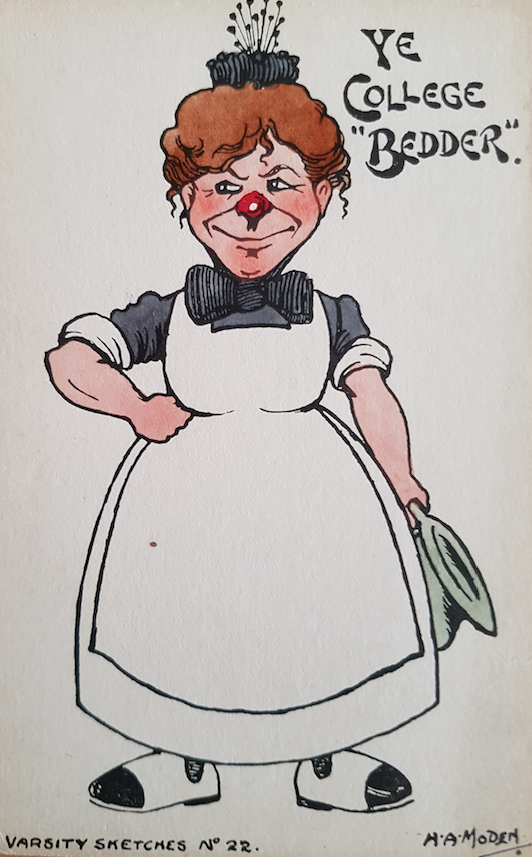
A caricature of a Bedder by the Cambridge cartoonist HA Modern, early 1900s.
A caricature of a Bedder by the Cambridge cartoonist HA Modern, early 1900s.

A Bedder caricatured in Oxbridge Men: British Masculinity and the Undergraduate Experience 1850-1920 by Paul R Deslandes.
A Bedder caricatured in Oxbridge Men: British Masculinity and the Undergraduate Experience 1850-1920 by Paul R Deslandes.
CORPUS BEDDERS: FROM THE ARCHIVES
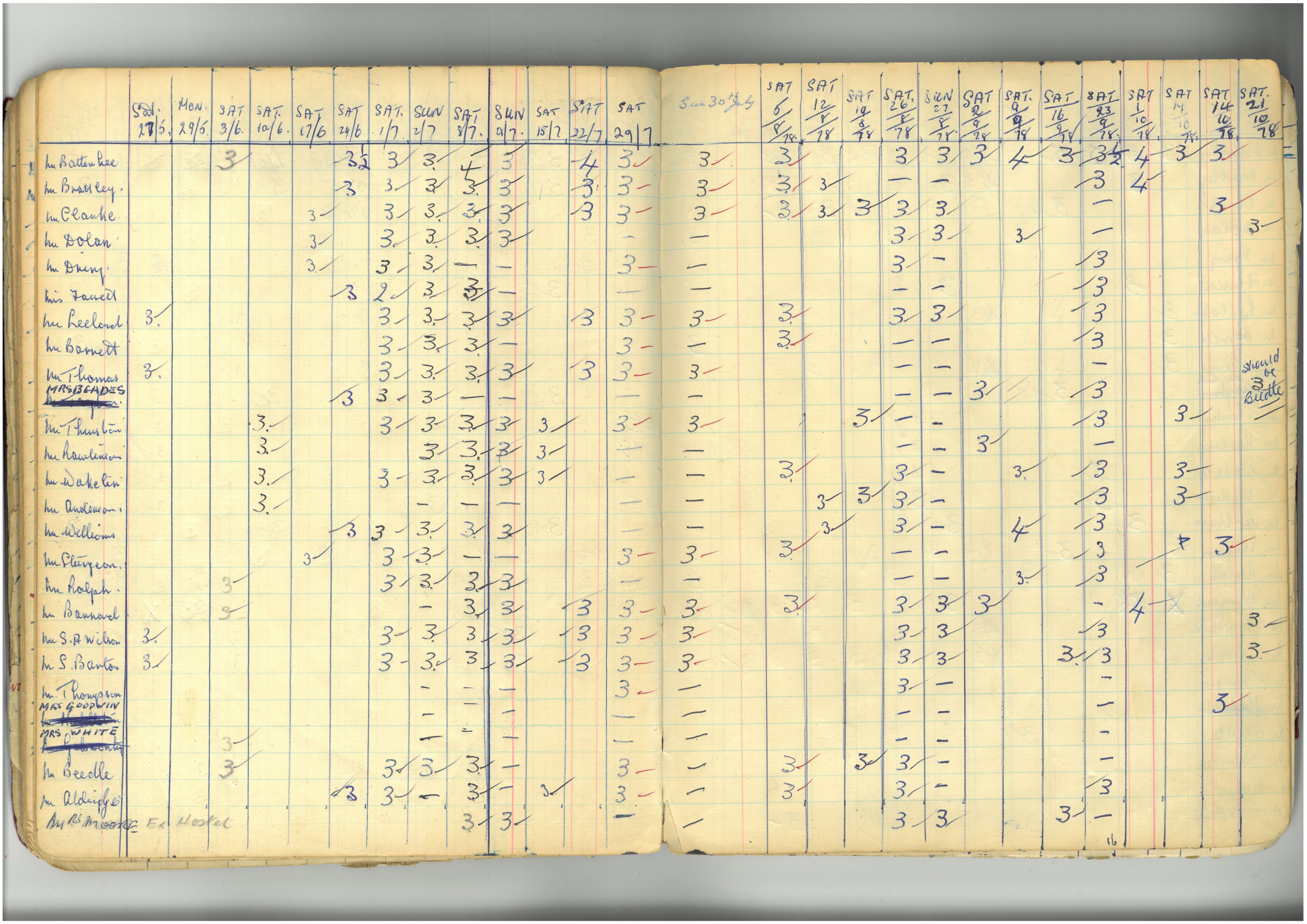
A record of the weekend hours worked by Corpus Bedders in the 1970s. Whether Bedders should work on the weekends was a subject of much debate at that time.
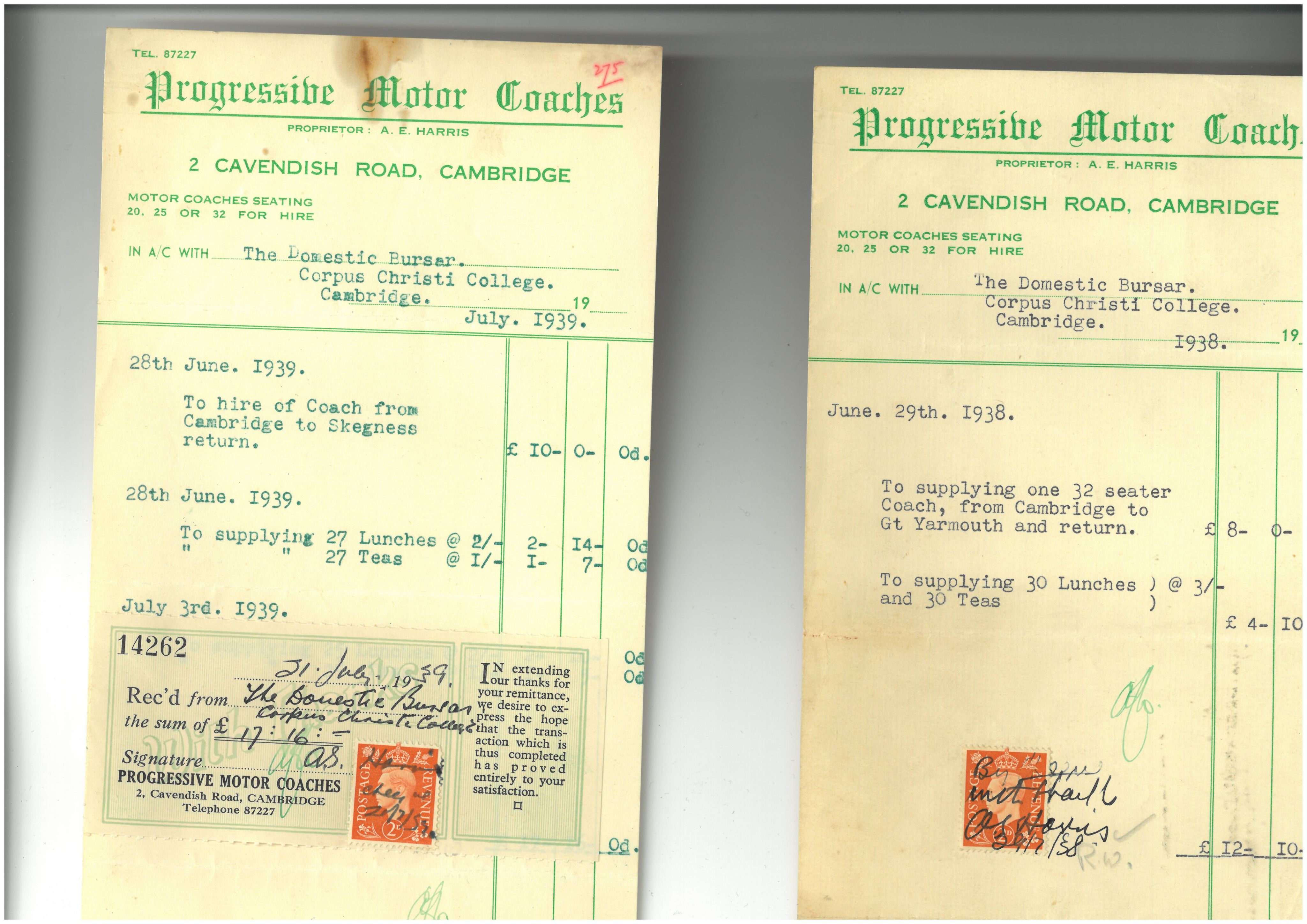
Bedders were treated by the College to a yearly outing by coach, sometimes to London where they attended the theatre.
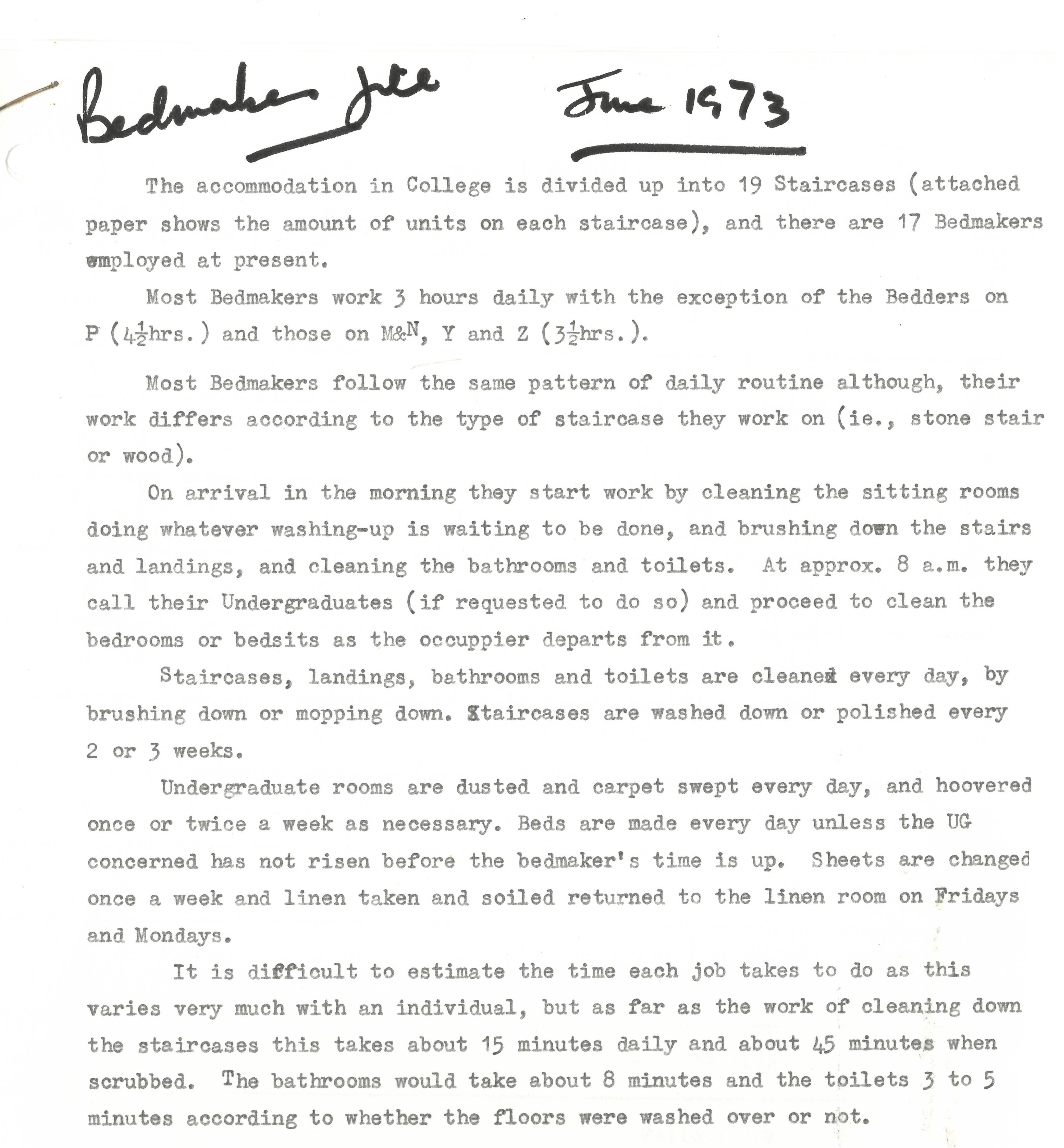
A description of a Bedder's duties in 1973. Most Bedders worked for several hours a day, often to fit around their family responsibilities.
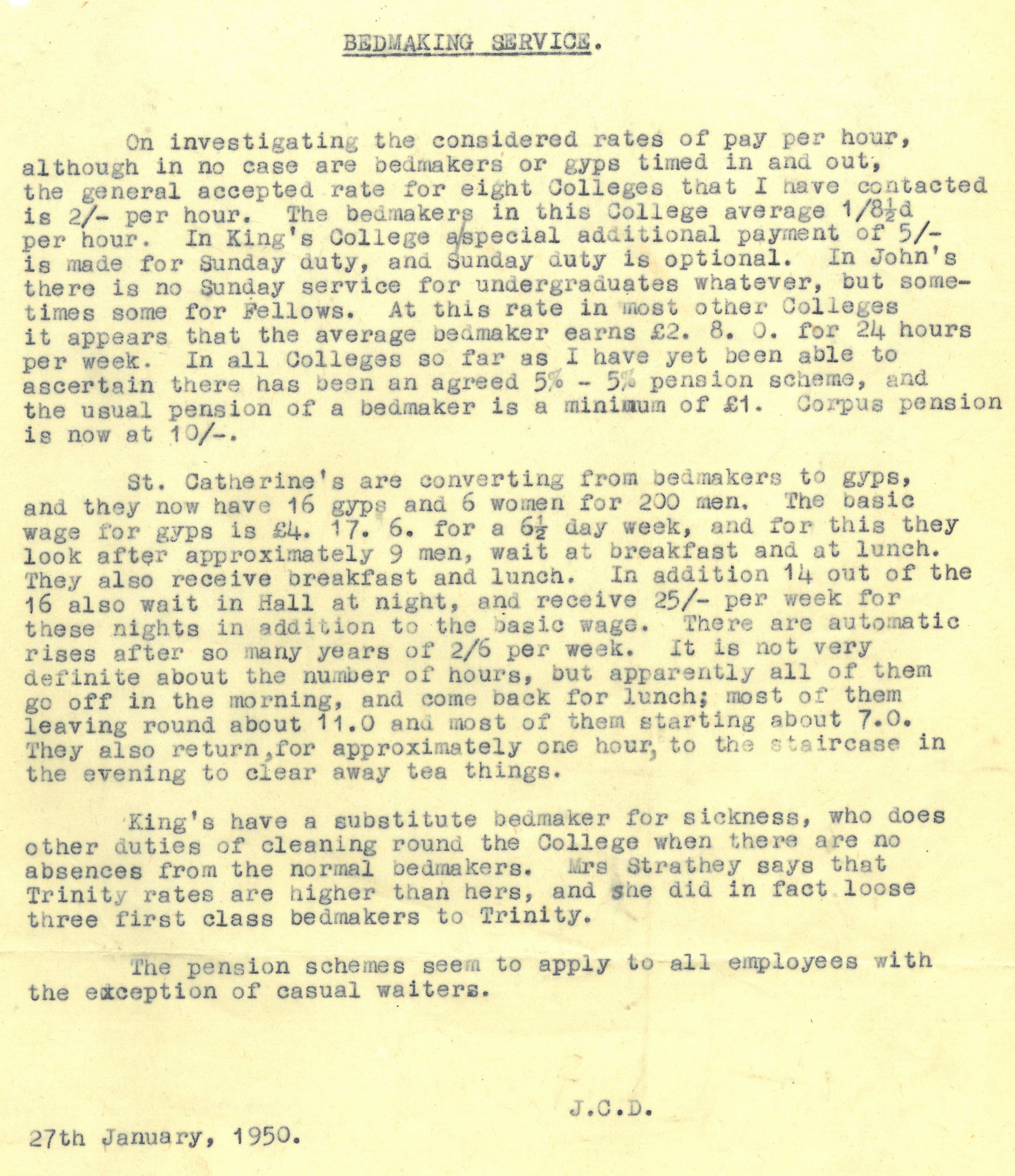
A College memo discussing rates of pay and pensions across Colleges in 1950.
The Schweitzer sisters photographed at their home in Cambridge by Richard Gaunt (m1966). Originally from Austria, one of the sisters was a Corpus Bedder until 1973.
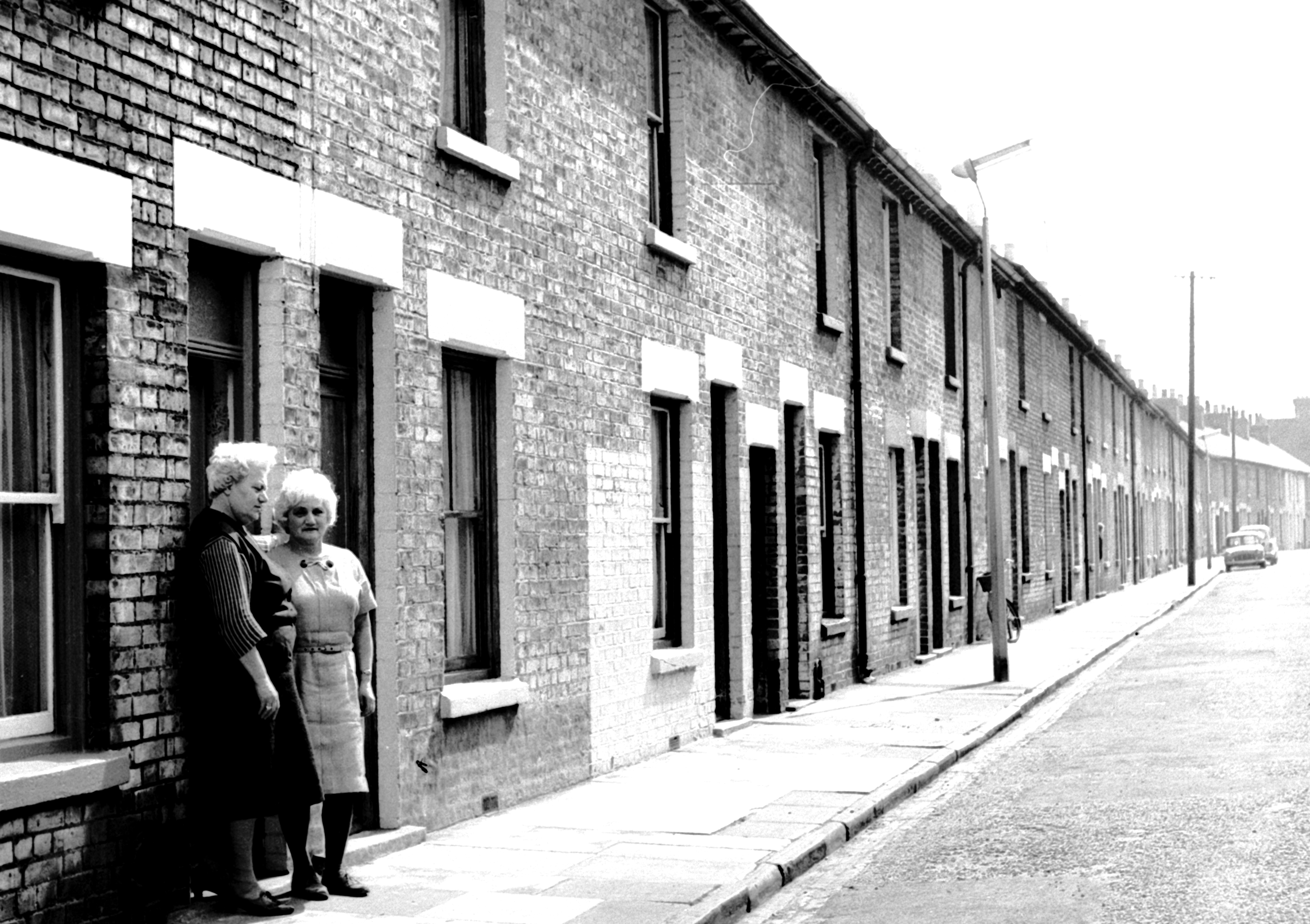

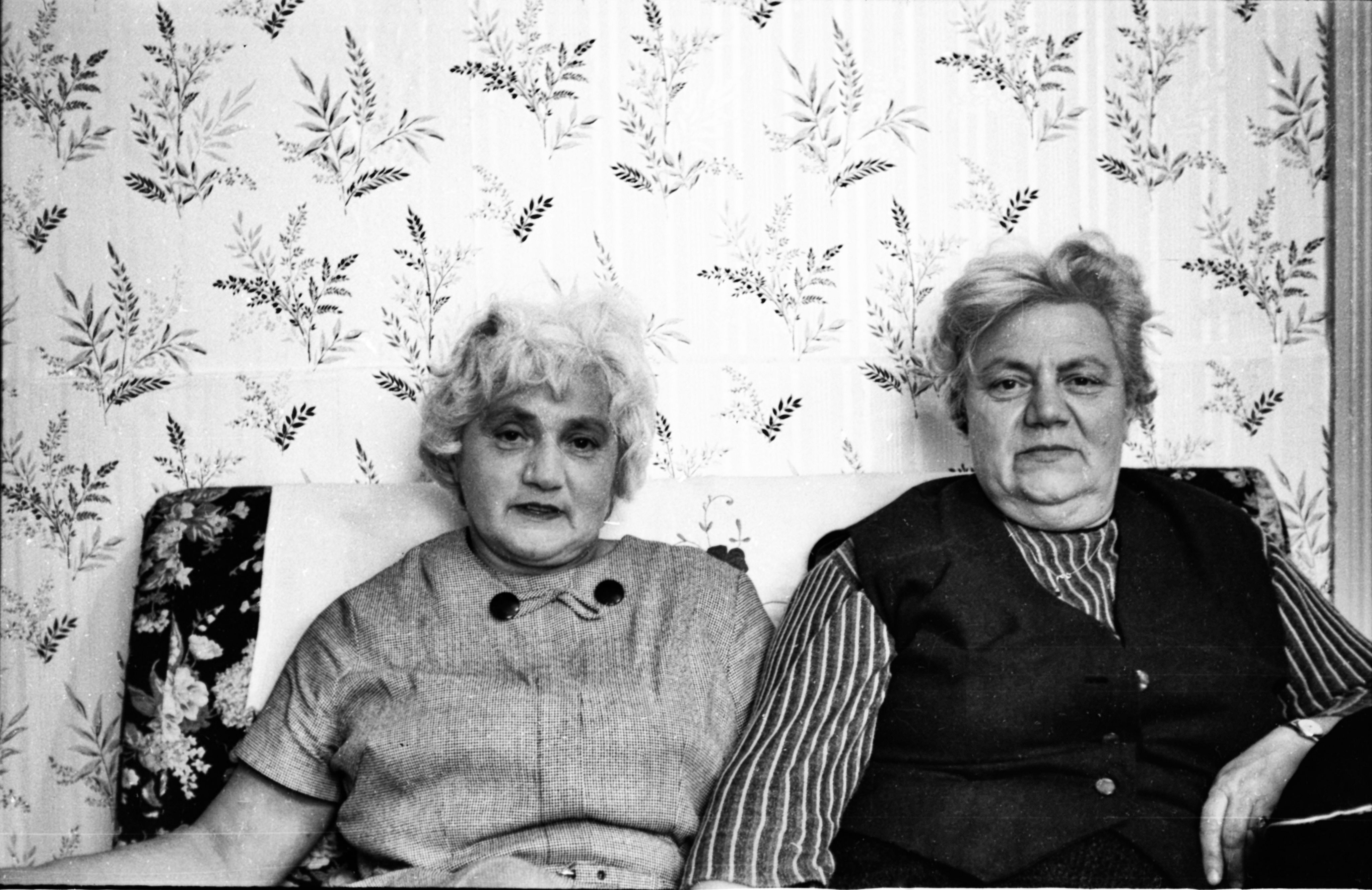




Corpus Bedders, 1975.
Corpus Bedders, 1975.
Alumnus Ian Shaw (m1974) looks back on his relationship with his Bedder Phyliss Creek and other staff during his Leckhampton days.
"Phyliss was the bedder at 7 Selwyn Gardens and housekeeper for Dr Stuart Elliot, a bachelor Fellow, 'a true gentleman' as Phyliss would call him. She lived in a College flat in 32 Selwyn Gardens in the same building as Margaret and George Meggison, Leckhampton's Housekeeper and her husband.
Phyliss was a very private gentle lady, extremely conscientious and house proud. No 7 always looked immaculate. The kitchen in No 7 was very rarely used unless we students were entertaining on a weekend evening. We were always assiduous in making sure we had tidied it up afterwards to Phyllis’s high standards.
Phyllis got to know my girlfriend Hilary well and would invite her to her flat for supper if I was attending a College event. Phylliss had a daughter in Canada. Around 1976, Phyliss had been the bedder in No 7 for 21 years. To celebrate this momentous occasion, the students of the house presented her with a huge bouquet of flowers.
One of No 7’s postgraduate students was a marine zoologist and scuba diver. On the wall of his room he kept a huge spear gun and we were always concerned Phyliss’s thorough dusting might fire off the gun! One weekend a student had a party which resulted in a considerable mess in the kitchen and his room. When Phyliss arrived the following morning she was mortified, as were the other students knowing how house proud Phyliss was. The student involved was still in bed, very much hung over and looking none too good. Typical of Phyliss, when she saw him, rather than be angry, she was concerned for his wellbeing and became motherly towards him. But that was Phyllis, a wonderful lady. The student, feeling bad about it all, sent her flowers afterwards.
I cannot speak for all my contemporaries, but I had an excellent relationship with my Bedder Phyliss. She was held in high regard and with affection by the students she looked after in No 7. I kept in touch with her long after I had left Cambridge. After retirement, Phyliss suffered a stroke and it was with great sadness that I learned of her death sometime later. My wife and I were privileged to know her.
The Meggisons
Margaret’s role at Leckhampton was administrative, looking after the books for the kitchen and the bar and overseeing the bedders. Some of the Bedders felt Margaret could be a bit authoritarian at times so tried to avoid her. When the Old House bedders were allowed to go on a five-day week, Margaret said it did not include the Leckhampton bedders. Predictably the Leckhampton bedders felt aggrieved but Margaret declined to approach the college about the situation. It was resolved after the MCR President was approached (ie. me!) and the then- bursar Dr John Dingle readily agreed the Leckhampton bedders should be on the same hours as the Old House Bedders, after all, they were all College Bedders. I could do no wrong in the Bedders' eyes after that!
As College Visitor, Prince Philip visited Leckhampton in the late 70s. Needless to say, a lot of pre-visit effort went into making Leckhampton House look smart and tidy, including the odd lick of paint. The visit was timed for about 10am. It turned out to be a lovely sunny morning so everyone gathered outside the front of the house. George Meggison took his bar responsibilities very seriously. He surmised that Prince Phillip being a ‘navy man’, he would probably drink a gin & tonic. George stocked up accordingly, ice, chilled tonic, lemon and new repeatedly polished glasses. On his arrival, Prince Phillip asked for a tomato juice which caused great commotion as none had been put out ready. An unseemly scramble though the bar ensued to find some!
Christmas Balls and Parties
No account of the contribution the bedders made to Leckhampton in the mid 1970s would be complete without mentioning their involvement in the annual Christmas balls and parties in Leckhampton House.
The MCR would organize the Leckhampton Christmas party. They were popular and well supported. It was customary to ask Head Porter Mr Jaggard to be Master of Ceremonies, a role he relished and did to great aplomb. The catering was done by the kitchen staff (Ken and Lil Bagstaff) and the drinks and bar run by the Meggisons who arranged all the drinks supply. On the night, several of the Bedders, in particular Phyliss Creek, would help out behind the scenes in the kitchen and clearing up afterwards, well into the small hours. It was hard work. Although the MCR paid the staff for the evening, it was well below their normal rate of pay, so in effect the staff were giving some of their time out of good will."
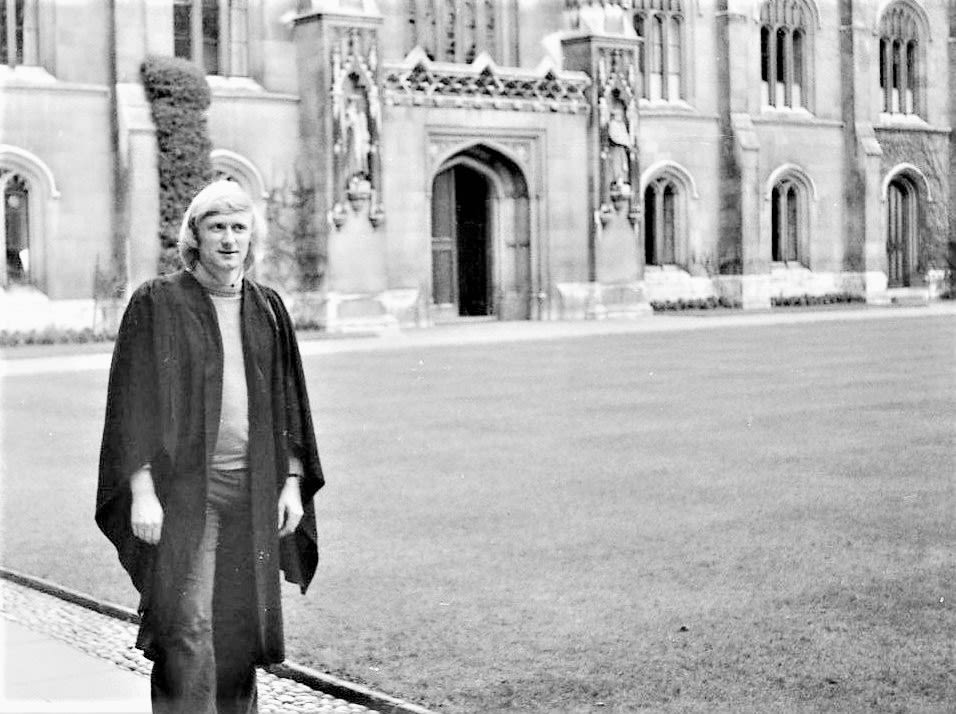
Ian Shaw at Corpus in 1975. He was a postgraduate student studying medicine.
Ian Shaw at Corpus in 1975. He was a postgraduate student studying medicine.

Corpus residence at 7 Selwyn Gardens in 1975.
Corpus residence at 7 Selwyn Gardens in 1975.
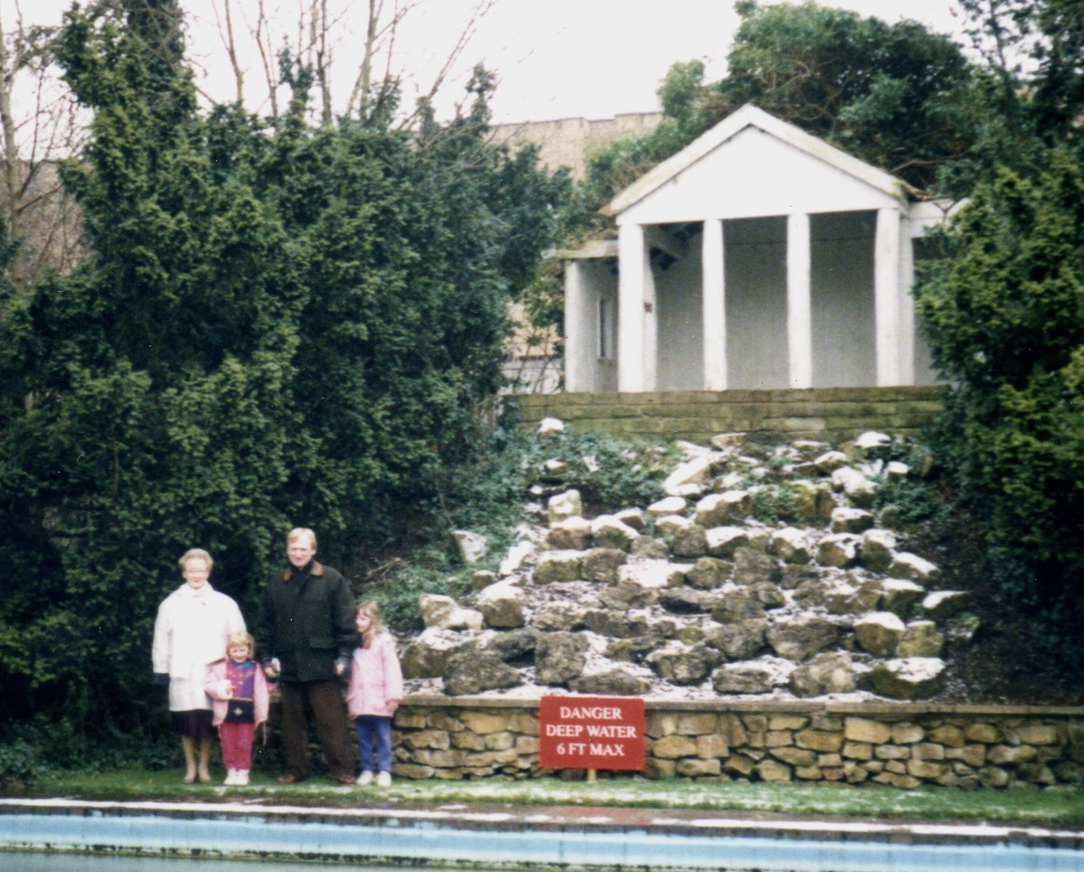
Ian Shaw and his children with Phylliss Creek on a visit to Leckhampton in 1994.
Ian Shaw and his children with Phylliss Creek on a visit to Leckhampton in 1994.
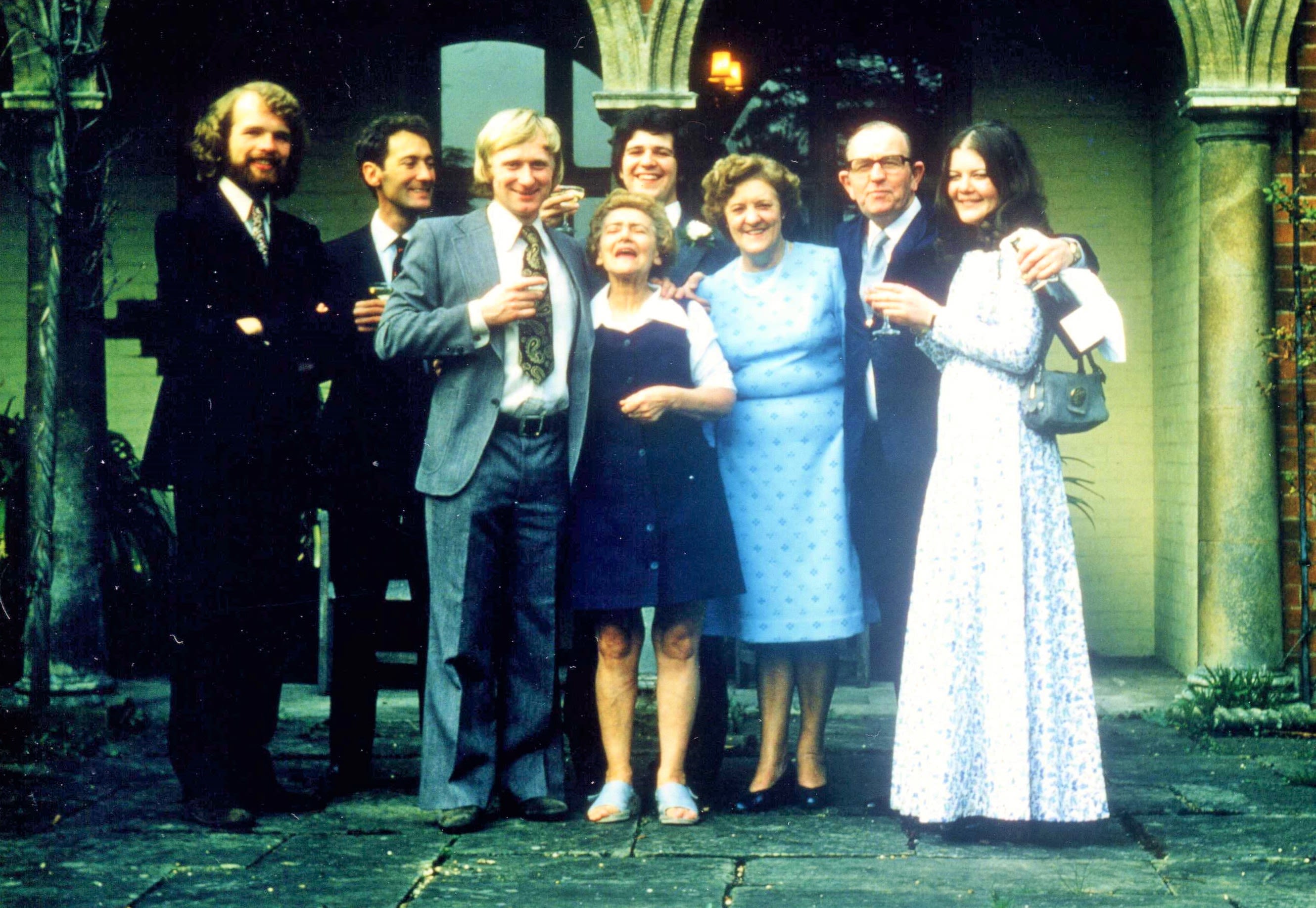
From left to right: Alex McClay, Dr Michel Waring, Ian Shaw, Lil Bagstaff, Glyn Belcher,Margaret Meggison, George Meggison, Hilary Carter (whom Ian went on to marry). He says, "Margaret Meggison was Leckhampton's Housekeeper. She and her husband lived in College accommodation in Selwyn Gardens and would never have considered herself a Bedder, her role being more managerial. As far as I was aware, George Meggison's only involvement was to open the bar (a hatch under the stairs) in Leckhampton House before dinner, and very occasionally after dinner. Lil Bagstaff was the wife of Ken Bagstaff, Leckhampton's chef. They prepared breakfasts and evening meals during the week. The photo was taken at the wedding of one of our fellow postgraduate students, Jeremy Lee. The reception was in Leckhampton House so Margaret and George Meggison and Ken and Lil Bagstaff would have been involved in its preparation.
From left to right: Alex McClay, Dr Michel Waring, Ian Shaw, Lil Bagstaff, Glyn Belcher,Margaret Meggison, George Meggison, Hilary Carter (whom Ian went on to marry). He says, "Margaret Meggison was Leckhampton's Housekeeper. She and her husband lived in College accommodation in Selwyn Gardens and would never have considered herself a Bedder, her role being more managerial. As far as I was aware, George Meggison's only involvement was to open the bar (a hatch under the stairs) in Leckhampton House before dinner, and very occasionally after dinner. Lil Bagstaff was the wife of Ken Bagstaff, Leckhampton's chef. They prepared breakfasts and evening meals during the week. The photo was taken at the wedding of one of our fellow postgraduate students, Jeremy Lee. The reception was in Leckhampton House so Margaret and George Meggison and Ken and Lil Bagstaff would have been involved in its preparation.
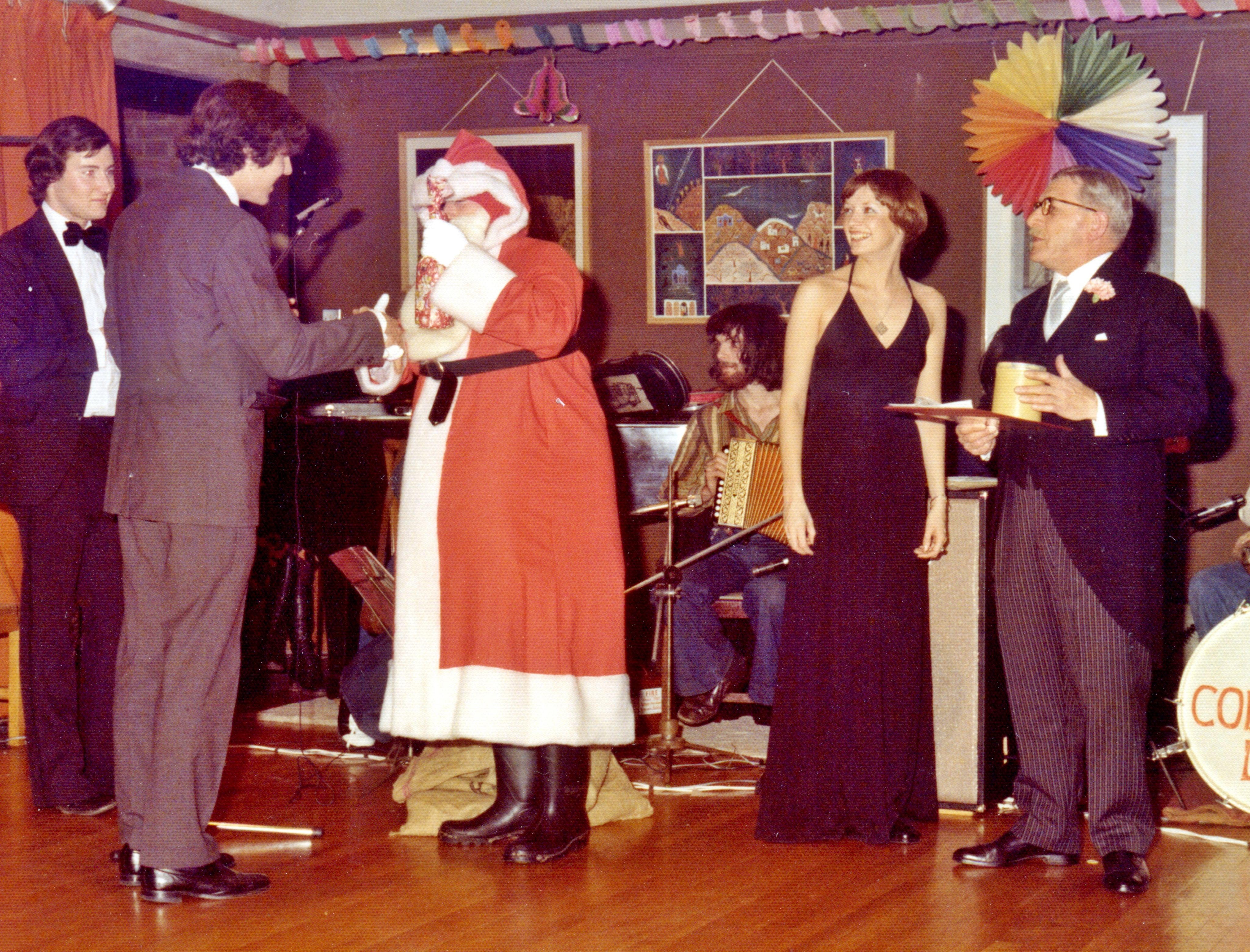
Ian Shaw as Santa at the Leckhampton Christmas Party, with Head Porter Albert Jaggard as Master of Ceremonies. The Bedders would help out behind the scenes.
Ian Shaw as Santa at the Leckhampton Christmas Party, with Head Porter Albert Jaggard as Master of Ceremonies. The Bedders would help out behind the scenes.
